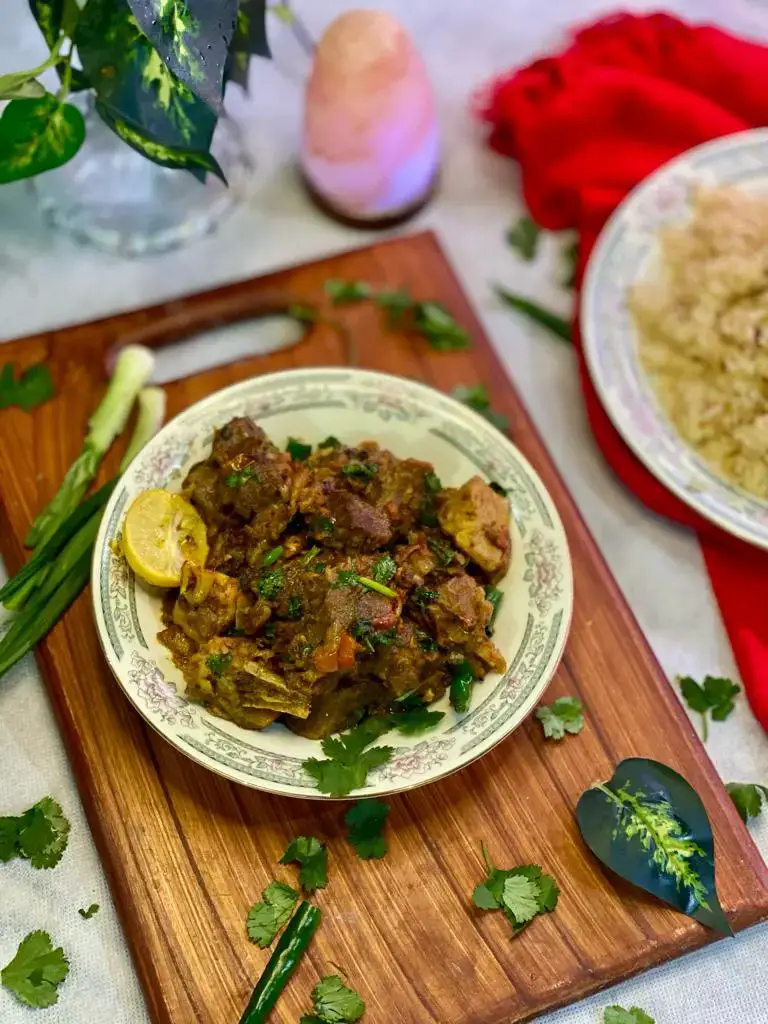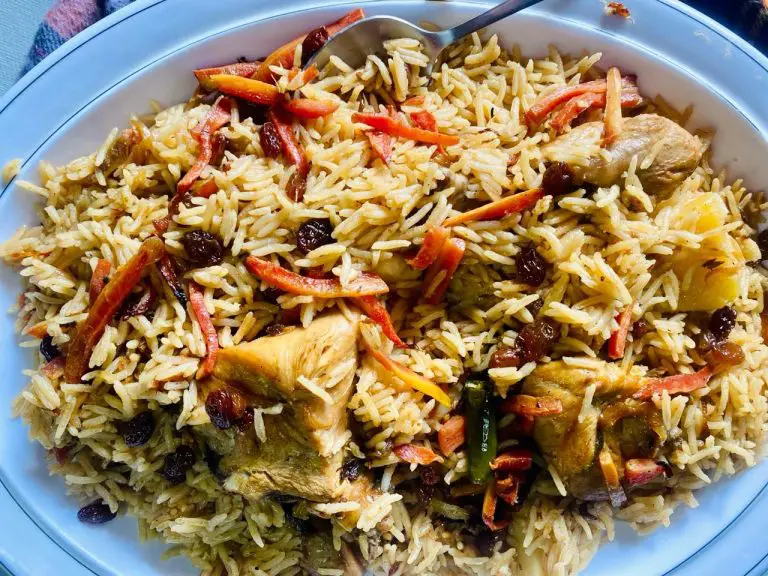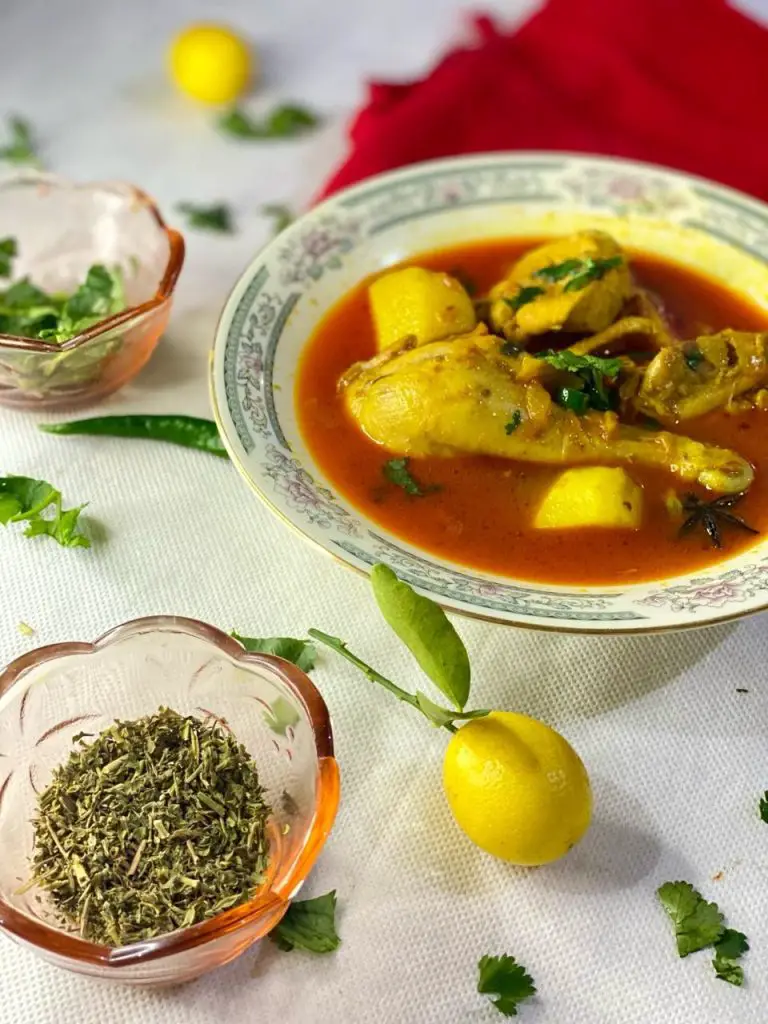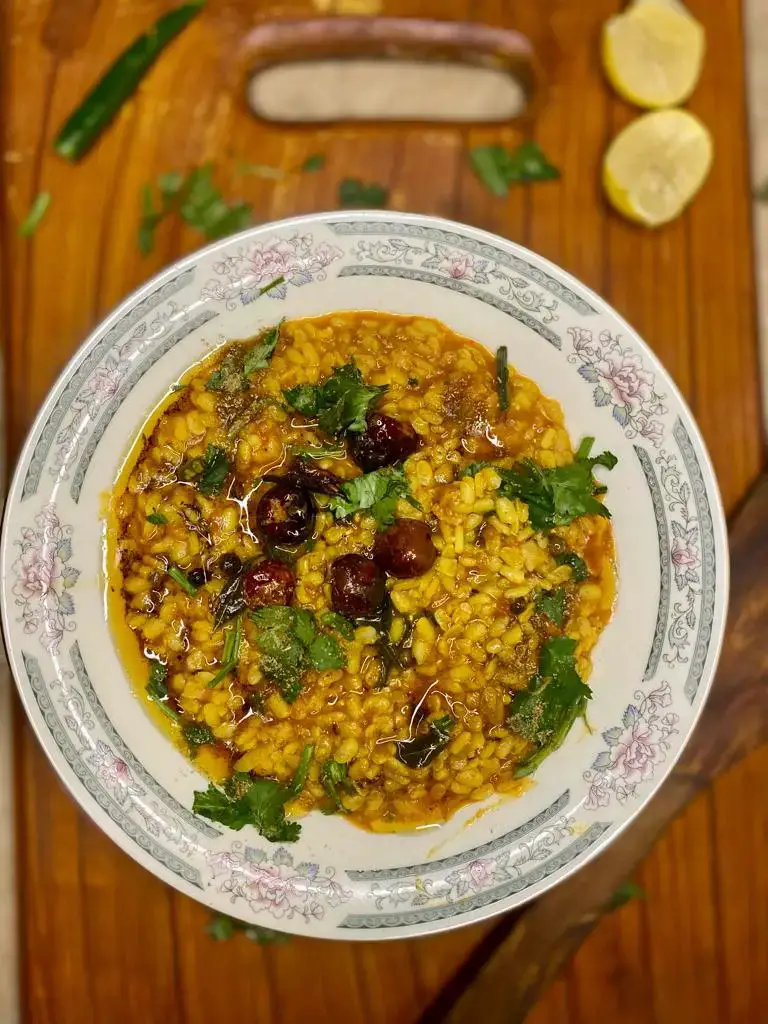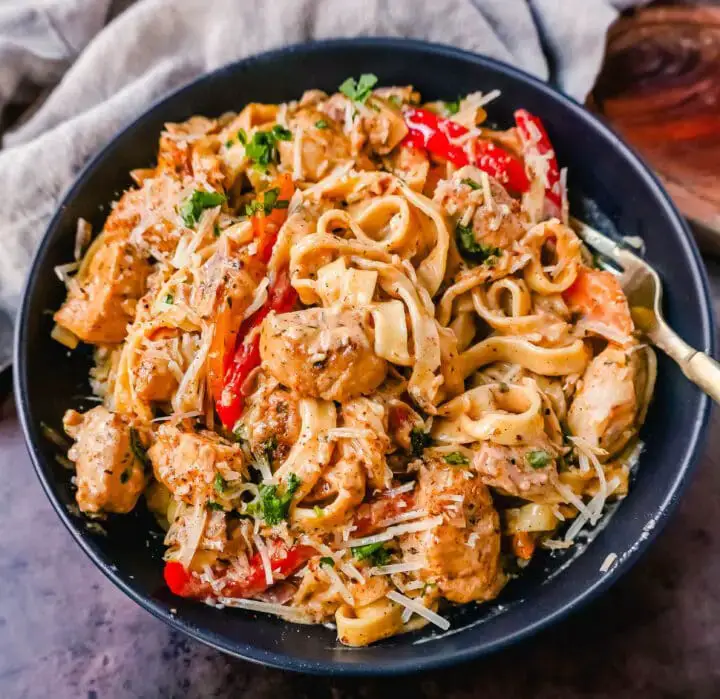Bhuna Gosht Recipe | Tangy Bhuna Gosht Masala
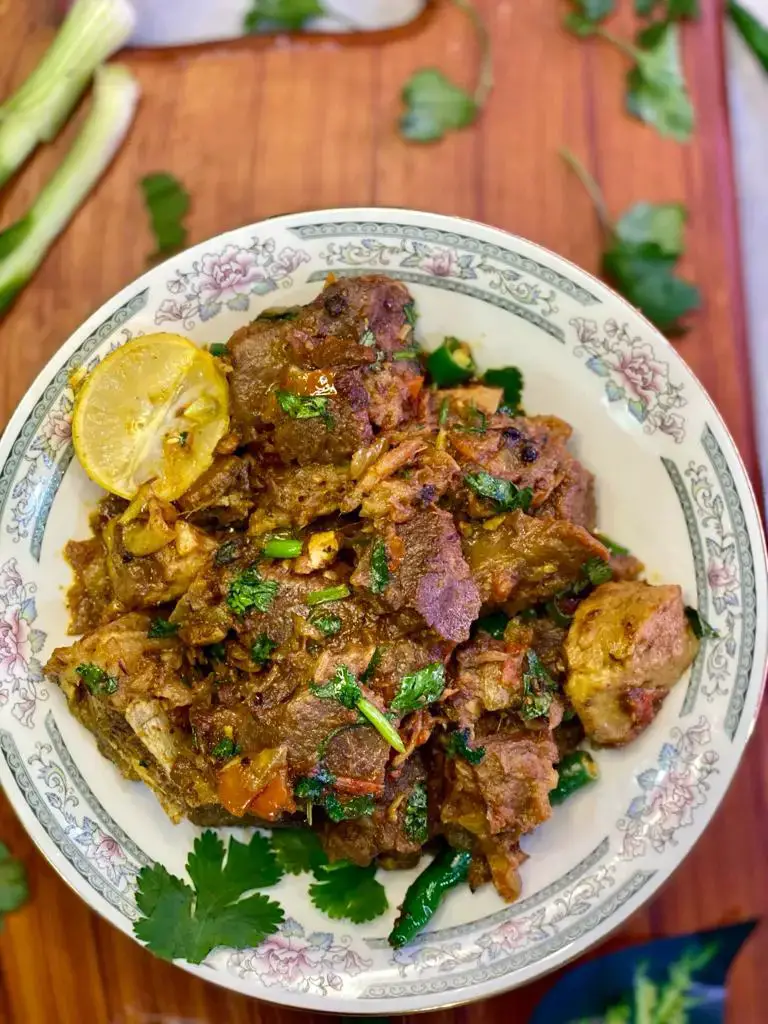
Bhuna Gosht Masala is a treasured dish in Pakistan, often served at family gatherings, celebrations, and special events. Its distinct appearance, vibrant colors, and mouthwatering flavors make it a showstopper on the dinner table.
This beloved recipe has been passed down through generations, with every home in Pakistan having its own variation. The intoxicating aroma of curry, tender beef pieces, and savory umami flavor combine to create an irresistible culinary experience.
What sets Bhuna Gosht apart is its simplicity – just a few basic ground spices, ginger, garlic, and tomatoes come together to deliver authentic flavors. This recipe’s charm lies in its adaptability; feel free to customize it to your taste preferences.
As someone who has been cooking this dish since childhood, I’ve learned valuable tips from my mom to elevate Bhuna Gosht for special occasions. If you’re craving a zesty and savory Bhuna Gosht Masala, today’s recipe will be your trusted guide.
Why You Should Love Bhuna Gosht Recipe?
Bhuna Gosht masala is a true culinary indulgence, where the rich flavors of tomatoes, garlic, and ginger meld together to create a succulent and tantalizing beef dish. The velvety gravy, thick and oily in texture, adds an extra layer of depth and satisfaction, making it a perfect accompaniment to naan or roti.This recipe is surprisingly easy to prepare, requiring no advanced culinary skills whatsoever. In fact, all the ingredients needed are likely already stocked in your kitchen, making it a convenient and accessible meal option.Moreover, Bhuna Gosht masala is also an excellent source of nutrition, boasting juicy beef chunks that provide a concentrated dose of protein and iron. This hearty dish will not only satisfy your taste buds but also give you an instant energy boost.
Which Meat Is Suitable: Beef Vs Mutton
In the traditional recipe for Bhuna Gosht masala, beef is the typical meat used. However, mutton can be a suitable alternative in certain circumstances. One reason for this is that mutton takes longer to cook than beef due to its lack of fat, which makes it tougher and less flavorful. In contrast, beef has a higher fat content, making it softer and juicier when cooked. Although there is currently a shortage of beef meat in the UK, mutton can be used as a substitute. When cooking with mutton, it’s essential to add more water to speed up the sautéing process. This adaptation allows for a similar flavor profile to the traditional recipe while utilizing an alternative meat source.
How To Cook Bhuna Masala?
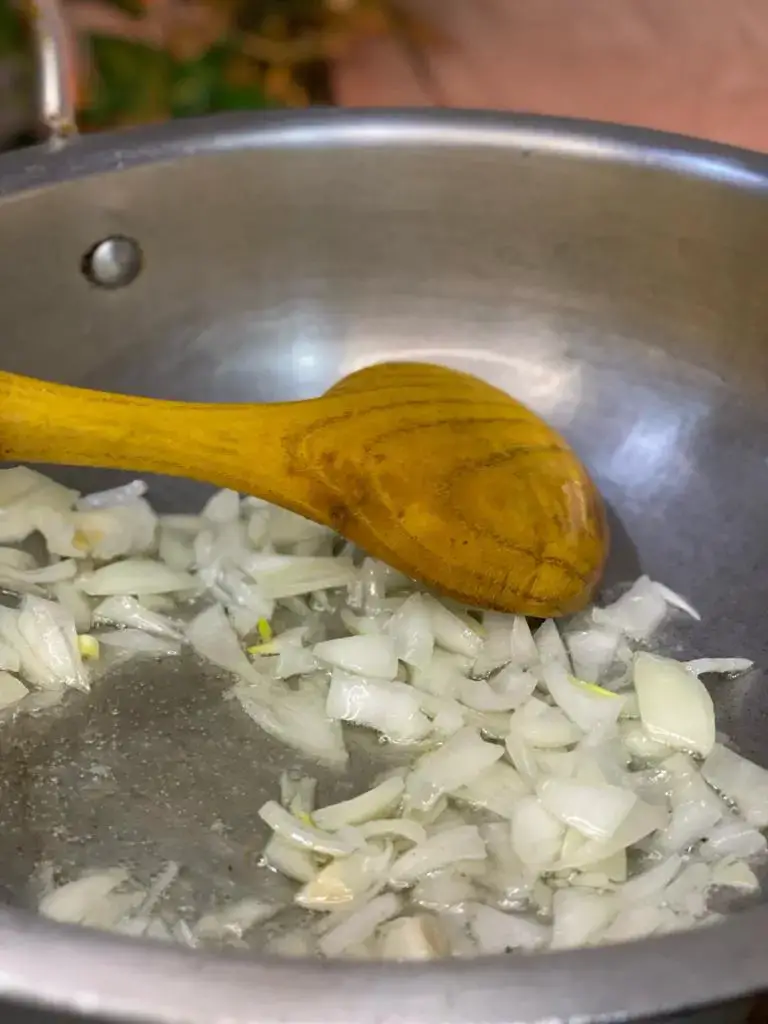
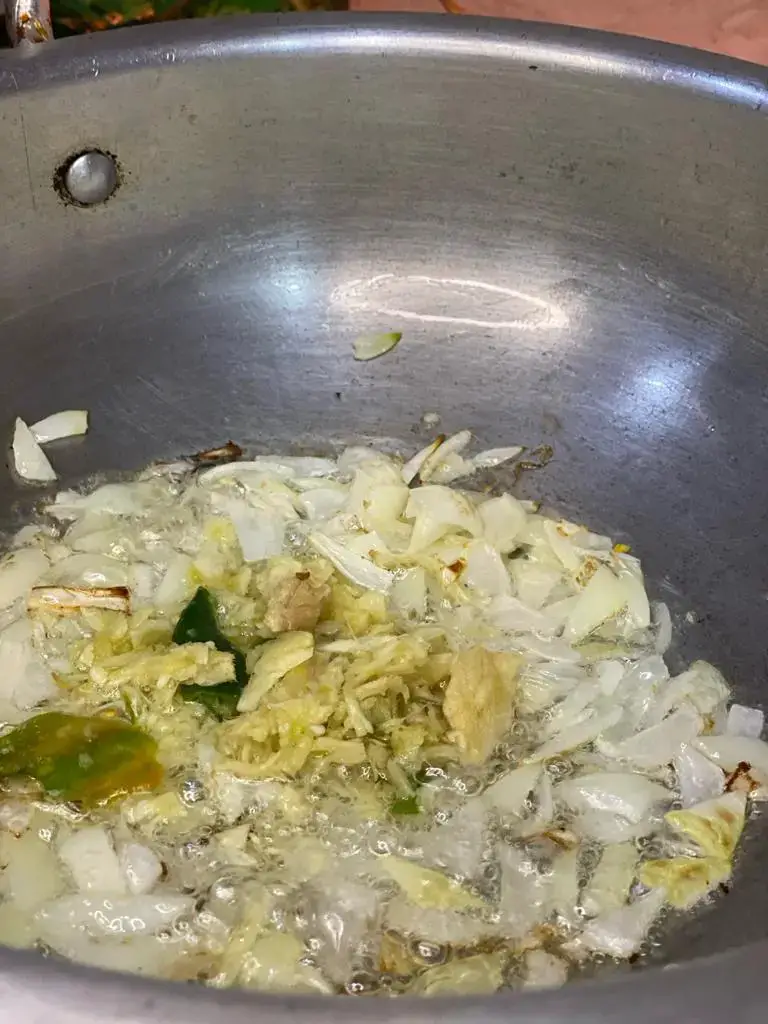
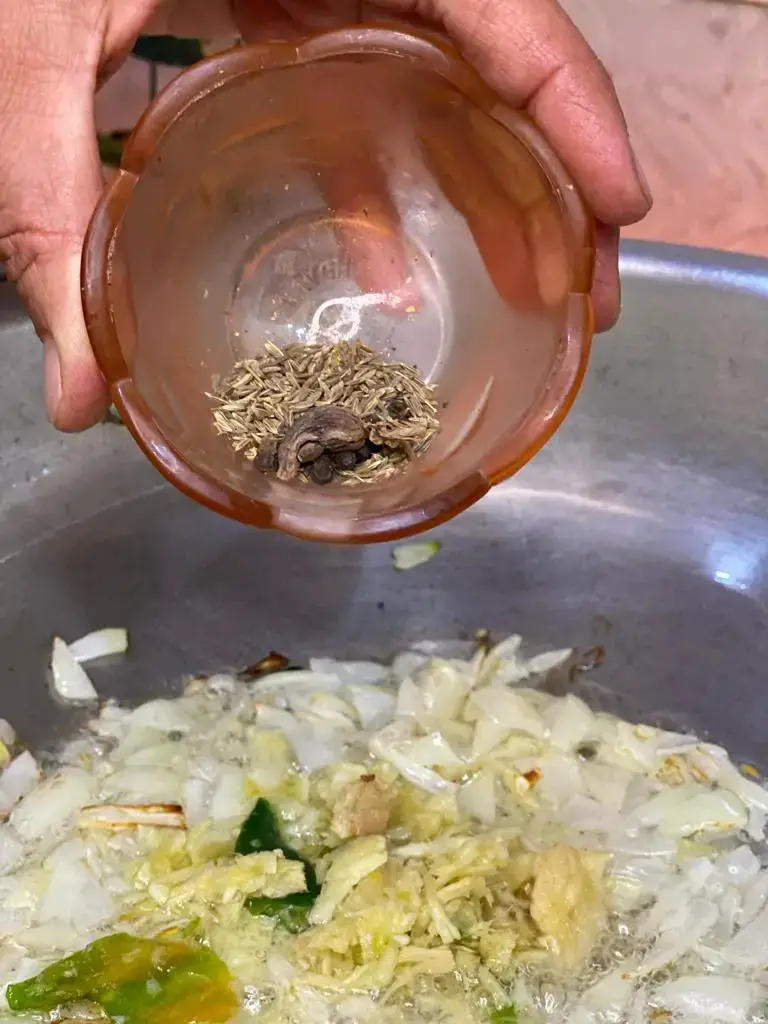
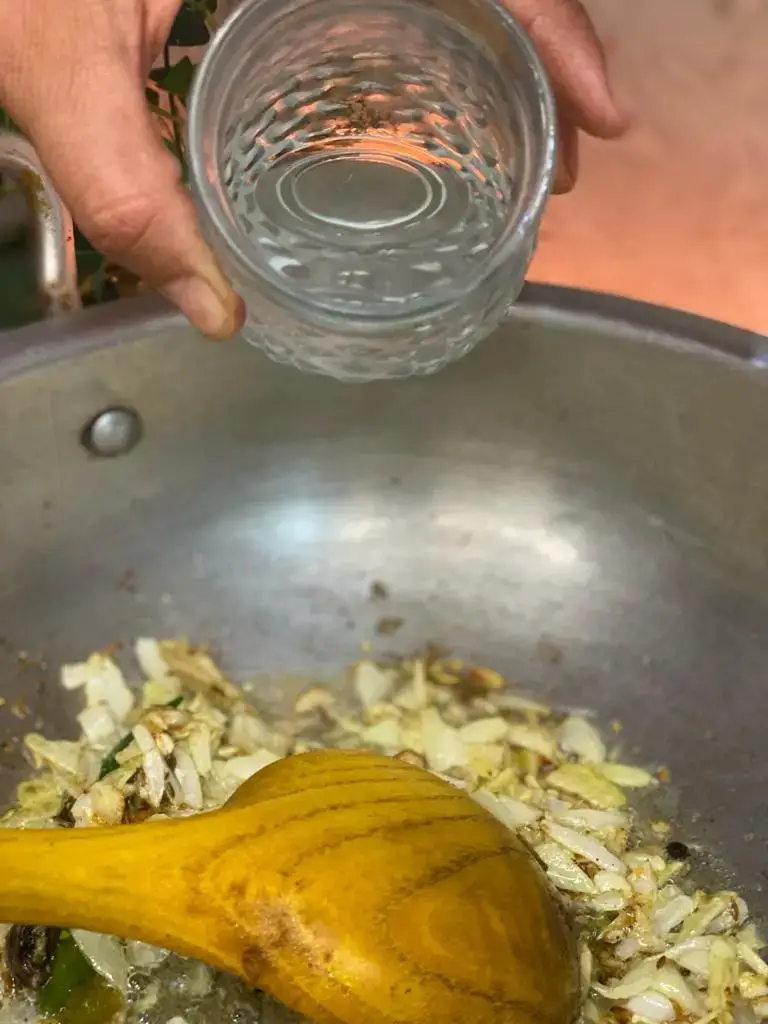
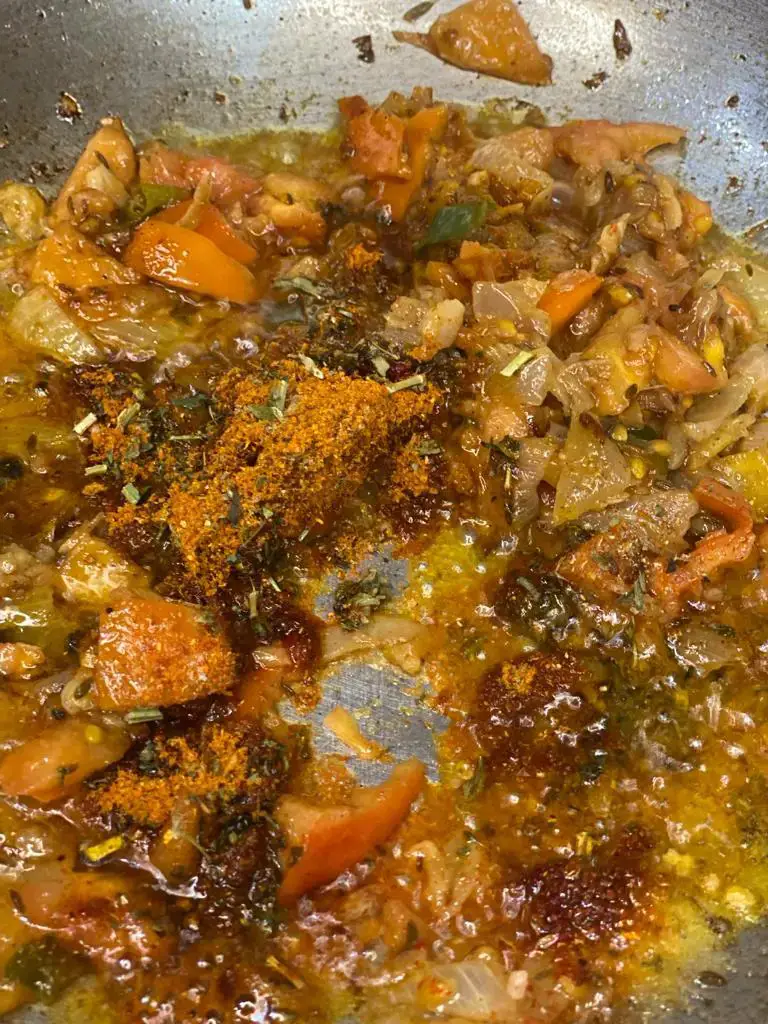

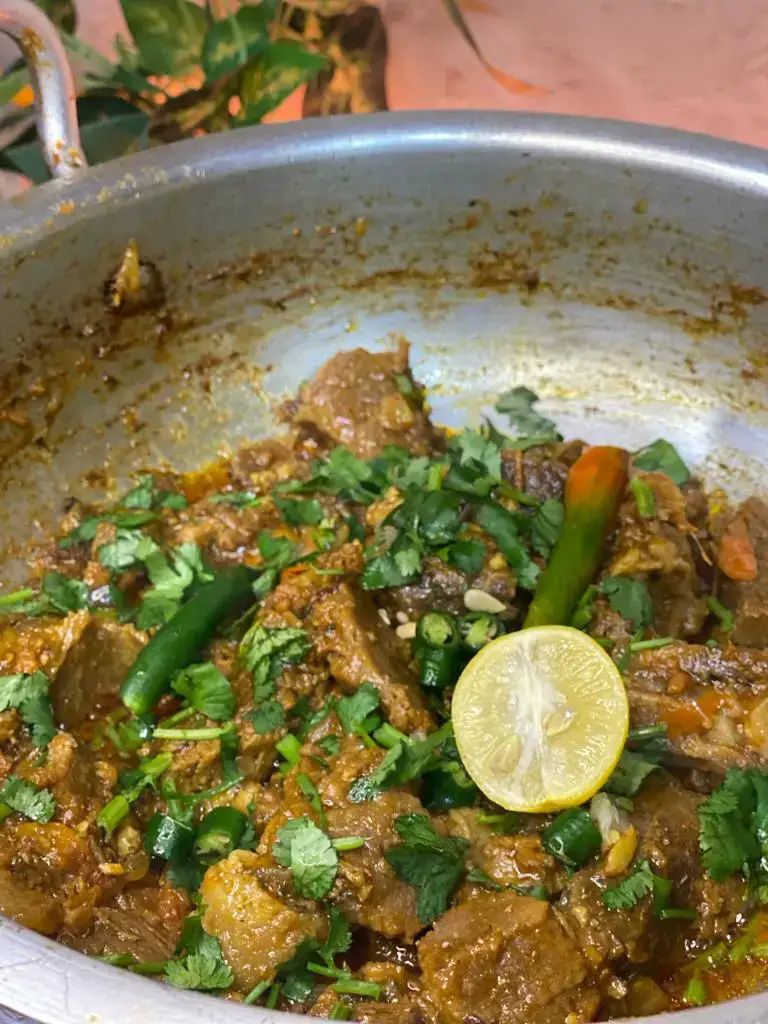
As you begin to prepare the beef stew, start by boiling the beef in a pressure cooker with four glasses of water, one tablespoon of salt, and turmeric powder. This process should take around 40-45 minutes on medium flame. Once the meat is cooked, it’s time to move on to the next steps.To sauté the onions, heat oil in a pan or wok over low flame. Cook the onions until they reach a light brown color, but avoid over-charring them. This process should take around two minutes.Next, add the garlic ginger paste and garam masala to the pan, stirring for two minutes on medium flame. This combination of ingredients will infuse the gravy with rich flavors. After that, it’s time to add the tomatoes. Include a splash of water as well, allowing the tomatoes to decompose quickly. Reduce the flame to low and let the tomatoes cook for two minutes.Now it’s time to bloom all the ground spices. Add the spices to the pan along with a few drops of water to prevent burning. Stir the gravy gently and let it simmer on medium flame for two minutes. Use a spatula to press the tomatoes, allowing their juice to infuse into the gravy.The final step is to add the boiled beef to the stew and let it simmer for eight minutes on medium flame. Continue stirring the stew over time to ensure everything mixes perfectly.Finally, garnish with cilantro, chilies, and a squeeze of lemon. Your beef stew recipe is now ready to be served.
Nabeela’s Pro Tips
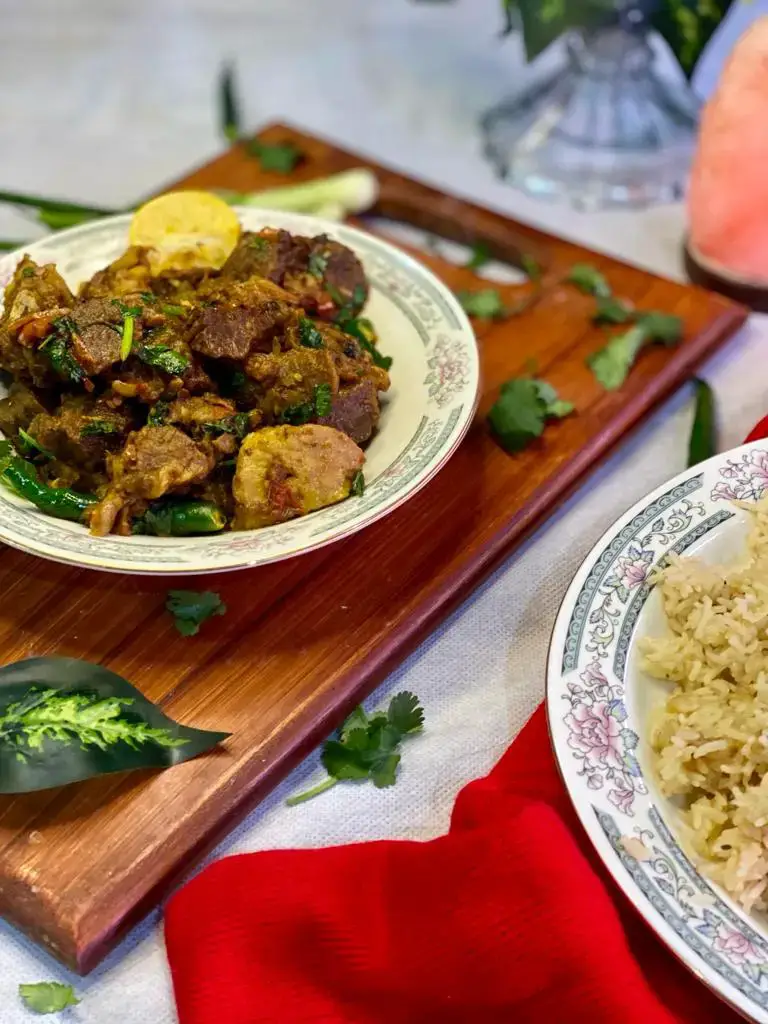
The foundation of a delicious Bhuna Gosht masala lies in the tender and soft quality of the beef. To achieve this, I prefer to pre-boil the meat in a pressure cooker, which not only saves time but also ensures the beef remains juicy and succulent. This approach stands in contrast to cooking raw meat in a pan, which can be a labor-intensive process that ultimately yields less tender results. As a result, it’s essential to use boiled beef when making Bhuna Gosht. In addition to its texture-enhancing benefits, boiling the beef also enables you to create a more vibrant and zesty gravy by incorporating Kashmiri red chili into your dish. This spice not only adds a pop of color but also imbues the sauce with a rich, spicy flavor that complements the tender beef perfectly.
FAQs
You’re safe storing the Bhuna Ghost in the fridge, where it can be reheated on the stove later. Just be mindful not to keep it there for more than a day. When it comes to Chapli Kababs, you can refrigerate them for up to 24 hours before reheating and serving. However, I advise against storing the keema mixture in the fridge as it can release excess moisture, ruining the dish’s texture. To spice things up, simply add more red chili powder and Kashmiri red chilies – these two ingredients are key to elevating the recipe’s fiery profile. When it comes to Bhuna Masala, you’re free to add yogurt according to your taste. This will not only deepen the gravy but also refine its texture, making it creamier and umami-rich. I personally recommend a maximum of 2-3 tablespoons of yogurt.
What To Serve With Bhuna Masala?
While Bhuna Masala is a flavorful dish on its own, it can be elevated by serving it with a variety of side dishes. For simplicity’s sake, I typically stick to naan, chapati, or roti – the classic Indian options that complement the main course well. Of course, no meal is complete without some fresh greens, so don’t forget to add a plate of salad or rita to the mix. To give your bites an extra burst of flavor, consider serving the Bhuna Masala with mint chutney or Imli paste – the tanginess adds a nice dimension to the dish. For those who prefer their rice and wheat, this dish pairs beautifully with pulao or white rice. And for an added layer of complexity and satisfaction, try serving it alongside mixed pickles – the combination is a real winner.
Bhuna Gosht Recipe
Bhuna Gosht masala holds a special place in Pakistani cuisine, often reserved for grand occasions and celebrations. Its rich aroma, striking color palette, and mouth-watering flavor are the hallmarks of this beloved recipe. The combination of spices, tender meat, and aromatic herbs creates an unparalleled culinary experience that never fails to impress.
Instructions
To begin, bring a pressure cooker to life by adding 4 glasses of water, 1 tbsp of turmeric powder, and salt, along with the meat of your choice. Pressure cook everything on medium flame for 45 minutes. Meanwhile, heat some oil in a pan or wok over low heat until it’s just warm enough to sauté onions until they’re lightly browned. Be mindful not to burn them – you want a subtle sweetness. Next, add the garlic-ginger paste and garam masala, stirring everything together for about two minutes to create a rich flavor profile. Then, introduce diced tomatoes and a splash of water to help break down their cell walls quickly. Simmer all this on low flame for 2 minutes. Now it’s time to add the ground spices and just enough water to prevent burning. Stir gently and simmer everything on medium flame for another 2 minutes. Use a spatula to press the tomatoes, releasing their juicy goodness into the sauce. Finally, add your boiled beef back into the stew and let it simmer for 8 minutes over medium heat, stirring regularly to ensure everything is well combined. Once you’re happy with the consistency, garnish with some fresh cilantro, chili peppers, and a squeeze of lemon juice. Your dish is now ready to be devoured.

